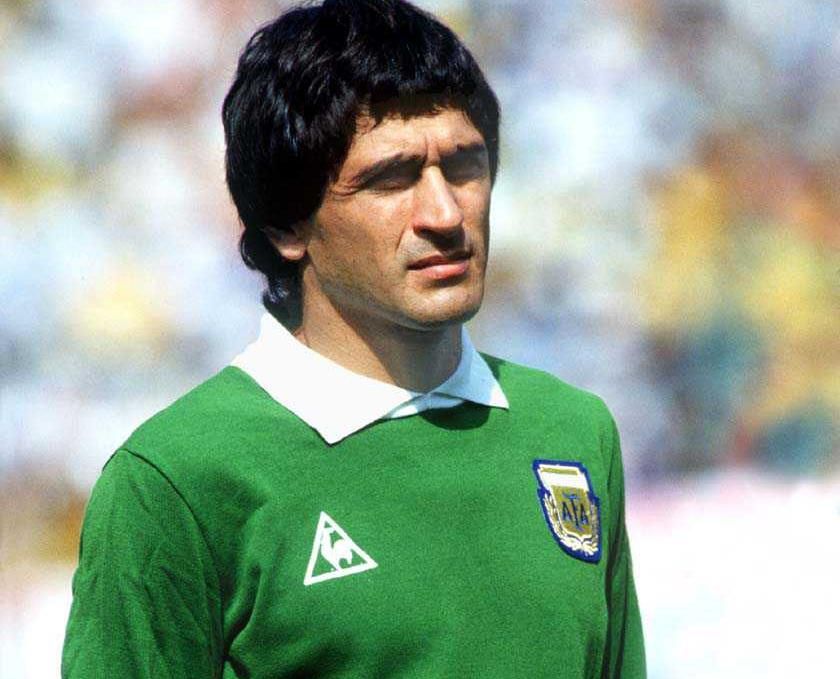
Argentina's Greatest FIFA World Cup XI
They lost in the first ever World Cup final. They have given the football world the likes of Diego Maradona, Lionel Messi and Gabriel Batistuta. When in full flow, Argentina are an absolute joy to watch.
Argentina are known to be an effective side, which has produced top footballers of its generations, be it a Maradona or a Messi.
Here's a look at the greatest ever World Cup XI that has represented Argentina, in a 4-4-2 formation.
Goalkeeper: Ubaldo Fillol
Ubaldo Fillol made 58 appearances for the national team. He was part of the World Cup winning squad in 1978, and was adjudged the best goalkeeper of the tournament in 1978. He has been picked in this squad, ahead of Nery Pumpido, Argentina’s other World Cup winning Goalkeeper. In 1974, he played only one match, but 1978 was Fillol’s World Cup. He saved a penalty in the game against Poland, and overall, had a spectacular tournament,
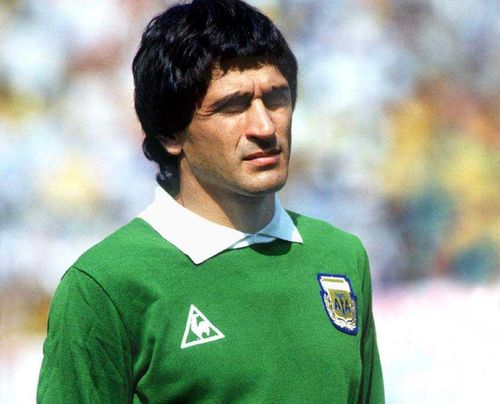
Before that, in 1977, Fillol was adjudged Argentina’s Player of the Year, becoming the first goalkeeper to receive the award.
Defenders: Javier Zanetti – Daniel Passarella – Oscar Ruggeri – Jose Luis Brown
Zanetti is Argentina’s most capped player and represented the country at the 1998 and 2002 FIFA World Cups. The Inter Milan legend is a throwback to the old times. A good, old-fashioned no-nonsense fullback, adept at bombing forward when required. Jose Pekerman and Diego Maradona came in for huge criticism when Zanetti was left out of the squad for the 2006 and 2010 World Cups. Zanetti is respected in world football circles for being a consummate professional, and putting the team before self at any point of time.
He is an asset for any side, because of his tireless work-rate, and his attitude. An attitude leaning towards winning, but playing within the laws and spirit of the game.
Passarella will forever be remembered by Argentines as the man who lifted the country’s first ever FIFA World Cup. Tough, disciplined, a rock at the back. He was the undisputed leader of Argentina’s 1978 World Cup winning side, and defines the modern Argentine footballing leader. He was adept at playing either at centre-back or in the sweeper back position. Although he was only 174cm tall, he was brilliant in the air, and scored a large number of goals from set pieces.

His greatest strength was his ability to rally his troops around him. His greatest moment came when he lifted the 1978 World Cup at the Estadio Monumental in Buenos Aires, the home ground of his beloved River Plate
Ruggeri is another legend from Argentina’s defense who defied age to keep his game at the highest level for a long long time. Having made 97 appearances for the National Team, Ruggeri was part of the successful campaign in 1986 and played two further World Cups in 1990 and 1994. The 1986 World Cup is synonymous with Diego Maradona, but the veteran had a huge role to play in Argentina going all the way. He scored the first goal in a 3-1 win over South Korea in the first game of the tournament, and was a rock at he back all through. He led Argentina to having the best defensive record in the tournament, as they conceded only 5 goals in 7 games. In 1990, Argentina’s defense went one better, conceding only 4 goals in 7 games, but that was not enough, as Argentina lost the final to Germany.
Brown is someone who best fills a position that has traditionally been a weakness for Argentina. At left back, he was solid, and like Zanetti, was adept at bombing forward when required. Brown is best remembered for scoring the opening goal in the ‘86 World Cup final, a goal which set Argentina on their way to glory. He scored off a header from a Jorge Burruchaga free kick. He will perhaps be remembered for playing through a part of that final with an injured right arm. After the injury, Brown refused to let his coach, Carlos Bilardo to even consider substituting him.
Defensive Midfielders: Diego Simeone and Javier Mascherano
Tough tackling, combative(quite literally), Simeone was an integral part of Argentina’s World Cup campaigns in 1994, 1998 and 2002. He was the midfield general who enabled the likes of Gabriel Batistuta and Hernan Crespo to revel in their roles as strikers. Perhaps, the one World Cup moment that Simeone will be remembered for is his theatrics to get David Beckham sent off in the 1998 World Cup, something that he later admitted to simulating. The current Atletico Madrid manager amassed 106 caps for Argentina. At one stage, he surpassed Diego Maradona in Argentina’s all-time appearance list, although he has since been overtaken by Zanetti and Roberto Ayala.
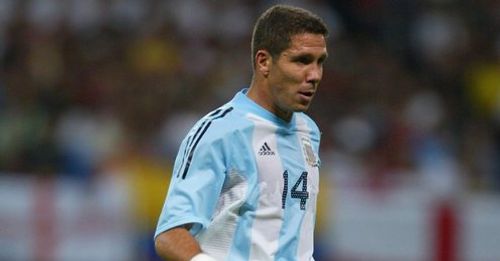
Mascherano is quite a debatable selection, with the likes of Fernando Redondo available in a similar position. But, as Diego Maradona said in 2010, Mascherano was among the first names on the teamsheet in the 2010 World Cup, where he captained Argentina to a Quarter-final finish. Mascherano has 98 International caps to his name, and could well reach the century mark in Brazil. Quite like Simeone, Mascherano is a tough-tackling, robust midfielder, who shields the back line quite brilliantly. Mascherano does all the dirty work which enables Lionel Messi, Angel Di Maria and company ahead of him flourish.
Attacking Midfielders: Diego Maradona and Osvaldo Ardilles
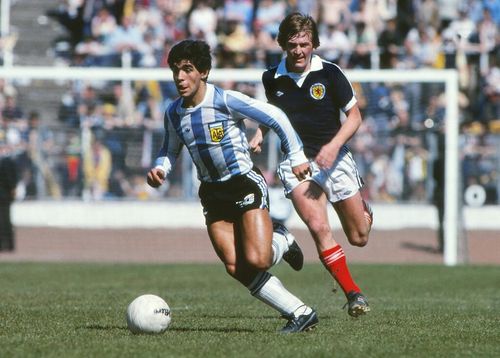
Diego Armando Maradona. Arguably, the greatest ever footballer the world has seen. Passing, dribbling and shooting. Maradona had absolutely everything in his game, and in his pomp, he was a delight to watch. Although the English media will forever hold the “Hand of God” goal against him, the absolutely sensational second goal that he scored in that very game cannot be easily forgotten. Maradona made 97 appearances for Argentina, and apart from the 1986 triumph, he was also part of the team that finished runners-up in 1990. In 1994, he was banned from playing in the World Cup after he was found to have tested positive in a drugs test. That made him the enigma that he is. Brilliant with a football at his feet, but otherwise, an individual who needed help. But, the world will always remember Maradona for the footballer that he was.
Little and slight, Ardilles had a sumptuous shot on him. Part of the 1978 World Cup campaign, he was the one who ensured that Mario Kempes ahead of him had a fantastic tournament. Ardilles made 63 appearances and took part in 3 World Cups, in 1974, 1978 and 1982.
Strikers: Gabriel Batistuta and Mario Kempes
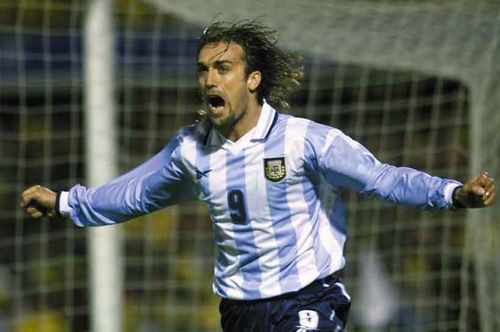
Batigol as he was fondly known, Batistuta is Argentina’s all-time top scorer with 56 goals. Batistuta was as complete a striker as you could see. Clinical finishing, powerful header, and pinpoint free kicks. At his best, he was a joy to watch. He played in 3 World Cups, in 1994, 1998 and 2002, and scored 2 World Cup hat-tricks, against Greece in 1994 and Jamaica in 1998. Batistuta had all the attributes of a conventional centre forward, and easily makes any all-time Argentina XI.
Kempes was the first man to win the Golden Ball, Golden Boot and the World Cup in the same tournament. He was served brilliantly in the triumphant 1978 World Cup campaign by Ardilles. He scored six goals in the 1978 World Cup Campaign, and was instrumental in his country’s triumph. He was brilliant in that final against the Netherlands, scoring 2 goals, as the Argentines won 3-1 after extra time. Like Batistuta, he was a typical centre forward – strong, pacey, and clinical. He would have been remembered by many as Argentina’s greatest footballer ever, if not for a certain Diego Armando Maradona, or a Lionel Andres Messi.
Substitutes: Nery Pumpido, Roberto Ayala, Gabriel Heinze, Fernando Redondo, Esteban Cambiasso, Juan Roman Riquelme, Lionel Messi.